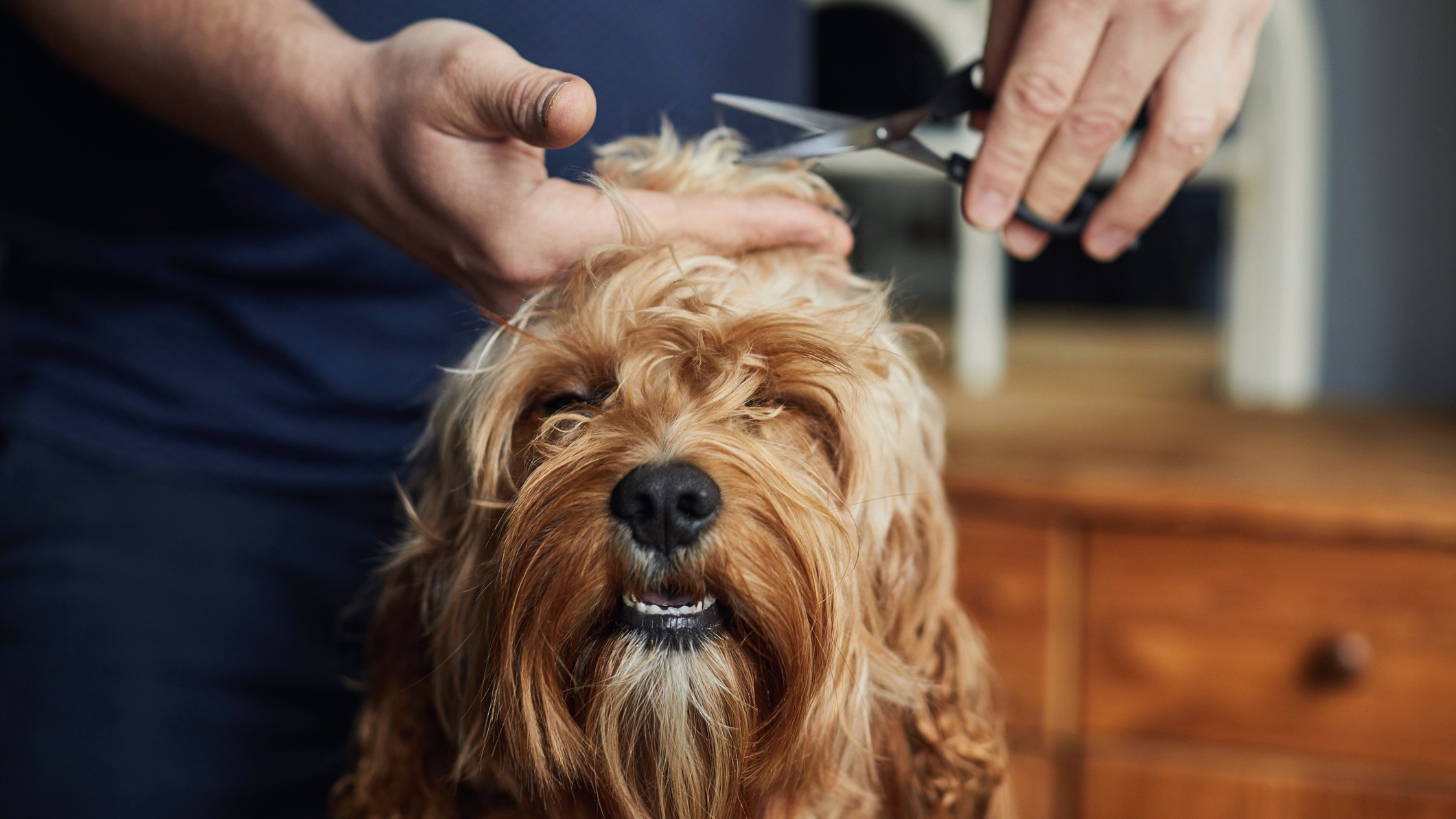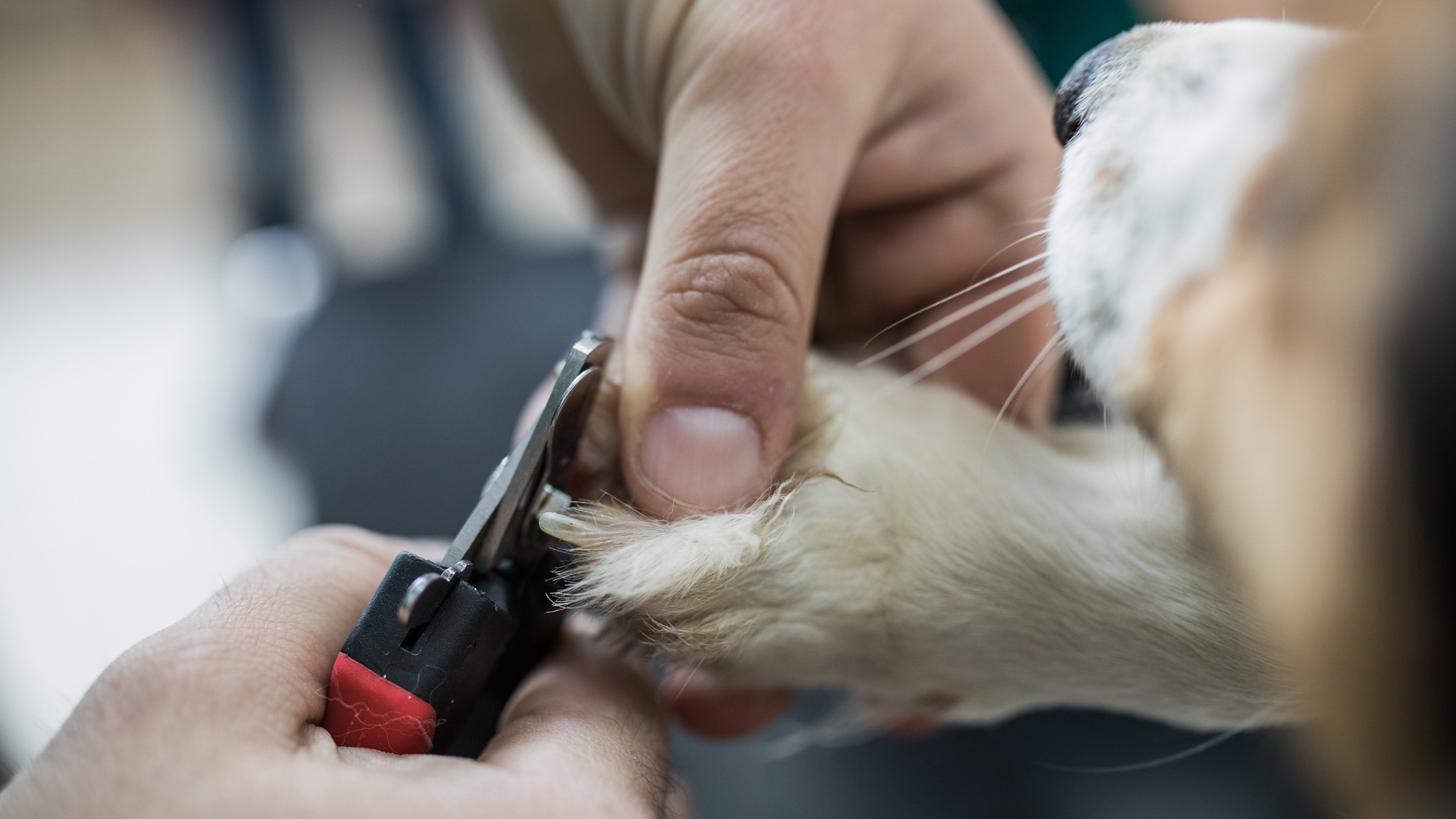How to clean a dog brush and grooming kit equipment
Knowing how to clean their grooming kit is a vital step to keeping your dog’s coat healthy and shiny

If you want your pooch to have luscious locks, knowing how to clean a dog brush and grooming equipment is key. Most dogs will need to be brushed at least once a week but, depending on the breed and length of hair, they may need brushing every day or every few days.
Brushing your dog will keep its coat healthy and shiny by getting rid of loose hair and untangling matts and knots, as well as distributing natural oils. It also removes dead skin and dander and can help you spot any allergies or skin conditions your pet might have.
But while making sure you have the right, high-quality tools, including the best dog brushes, scissors, clippers and nail trimmers for the job, is important, keeping them clean is even more of a priority. Your dog brushes and grooming equipment need to be hygienic to keep your dog safe and healthy. So make sure you make time to get cleaning. Here’s a handy guide to learn everything you need to know about cleaning your dog grooming kit and to get you started.
Why is it important to clean dog grooming equipment?
Brushes, combs and other dog grooming equipment are used to groom your dog so, of course, they will accumulate dirt and grub. It’s not only important to clean and look after your kit so that it lasts and you don’t have to keep buying new tools, but for the health and hygiene of your pet.
It’s ineffective to use a brush covered in dirt and dander as you’re just redistributing what you’re trying to get rid of. Not cleaning your dog brush and grooming kit can also lead to skin disorders, as well as spreading disease and parasites such as lice.
What you’ll need to wash a dog brush and grooming kit
- Hot water
- Antibacterial soap
- Rubbing alcohol
- Soft cloths
- Disinfectant such as Barbacide
- Hair dryer or high-velocity dryer
- Gloves
- Bleach
- Toothbrush

How to clean a dog brush and grooming equipment
Brushes and combs
Different types of brushes and combs can be used depending on what breed of dog you’re grooming and the length and texture of their hair.
- Slicker brush – This is the best overall brush for most hair types. It is best for keeping medium to long hair shiny and good for detangling knots.
- Pin brush – A pin brush is generally used on medium to long hair and single-coat dogs, but will help keep the coat fluffy.
- Curry brush – For dogs with short hair.
- Undercoat rake – This is best-suited to dogs with a double coat that sheds.
- Combs – Brushing works for the top layer of a dog’s coat, but combs help reach the roots of the hair. Use a fine-tooth comb for fine hair and a wide-toothed comb for a thick coat. Medium-toothed combs can be used for most hair types.
All of these will need to be kept clean and free from hair and dirt. Most are made from plastic and can be cleaned in the same way. However, if made from fabric, don’t soak these parts to avoid mold.
Get the best advice, tips and top tech for your beloved Pets
1. Remove hair
The first step to cleaning your brush is to remove any leftover hair, which you can do using your thumb and forefinger or even a toothbrush. Wear gloves if you have them for added hygiene. If the hair is trapped or stuck, try rubbing one brush against the grain of another to force it out.
2. Soak in hot water and antibacterial soap
Fill a sink or bowl with hot water, add a small amount of antibacterial soap and soak your brush for about 20 minutes. You can also use a few blobs of an organic shampoo or bleach if you need a deep clean for a sick animal. To make your own solution, mix equal parts of white wine vinegar or apple cider vinegar with water.
3. Dry
Rinse the brush and shake off the excess water. Then use a soft dry cloth to pat it dry or an HV dryer if you have one. Leave to dry fully with the bristle side down so that the water drains out.
4. Disinfect your dog brush
Once dry, you can use a clean toothbrush to make sure all the hair is out of the brush. Then spray with disinfectant such as Barbacide to disinfect. You can also make your own disinfectant using water and 10% bleach.
5. Store safely
Once clean, make sure your brushes are stored in a dry, warm place as cold temperatures attract germs. Keep them out of reach of your pets. Inspect them regularly and replace your brushes if there are cracks or broken bristles.

Clippers and scissors
It’s not just your dog brushes that need cleaning. You’ll want to make sure the rest of your grooming kit is kept in good condition.
1. Rid your grooming tools of stray hairs and nails
Using a dry brush or toothbrush, remove any hairs or bits of nail left on your clippers or scissors.
2. Wipe down with wet cloth and disinfectant
While you can soak the top of nail clippers in antibacterial soap, it’s best not to soak the full clipper or nail. You don’t want to soak the screws as this will have a negative effect on blade function. Instead, wipe them down with a wet cloth to remove excess hairs. Then spray them with a disinfectant or wipe them down using a tissue and 70% rubbing alcohol to remove any bacteria.
3. Dry well and oil
Using a dry soft cloth, dry well, especially between the scissor and nail clipper blades. Finally, open the blades to a 90-degree angle and add 1-2 drops of oil into the joint to lubricate, opening and closing the blades a few times. Be careful not to overoil and wipe away any excess.
4. Store somewhere protected
Keep your clean scissors and nail clippers closed and in a protected plastic or padded wallet until their next use.

Dog grooming clippers
Dog grooming clippers are not needed for short-haired dogs but you can use them on medium-haired dogs occasionally and more regularly for long-haired dogs. If you’re unsure of how to use them, it may be best to use a professional groomer. Grooming clippers should be cleaned after every use. Here’s how.
1. Remove hair
As with your other grooming kit, start by removing excess hair with a brush or toothbrush, or even a blast of air from a hair dryer.
2. Clean with a blade wash
Pointing them downwards, submerge the clipper blades in blade wash or water and antibacterial soap and turn the clippers on for about 8 seconds.
3. Dry and oil
Turn the blades off and wipe them down with a soft, dry cloth. Hold the clippers horizontally and put a drop of oil on each side of the blade to avoid rust. Wipe away any excess oil. You can also disinfect the blades using a cooling or disinfecting spray if using regularly.
4. Check and store well
Grooming clippers will also need to be checked for rust, nicks, and cable issues. Store them in a blade case or box in between uses.
How often should dog grooming brushes be serviced?
This will depend on how often you groom your dog. Most dogs should only be bathed once a month or every 4-6 weeks so as not to dry out their skin, but brushing will depend on their hair type and length.
The more you brush them, the more regularly you’ll need to clean your brushes. It’s a good idea to clean your dog brushes at least once a week, but this can be done more often if you’re brushing your dog every day.
Cleaning your dog grooming kit is as easy as following these steps and will ensure your dog is not only happy and healthy, but looks its best. Plus, grooming your dog is a wonderful bonding experience so it’ll be worth the effort.
Questioning, ‘How often should you bathe a puppy?’ We’re here to help.

